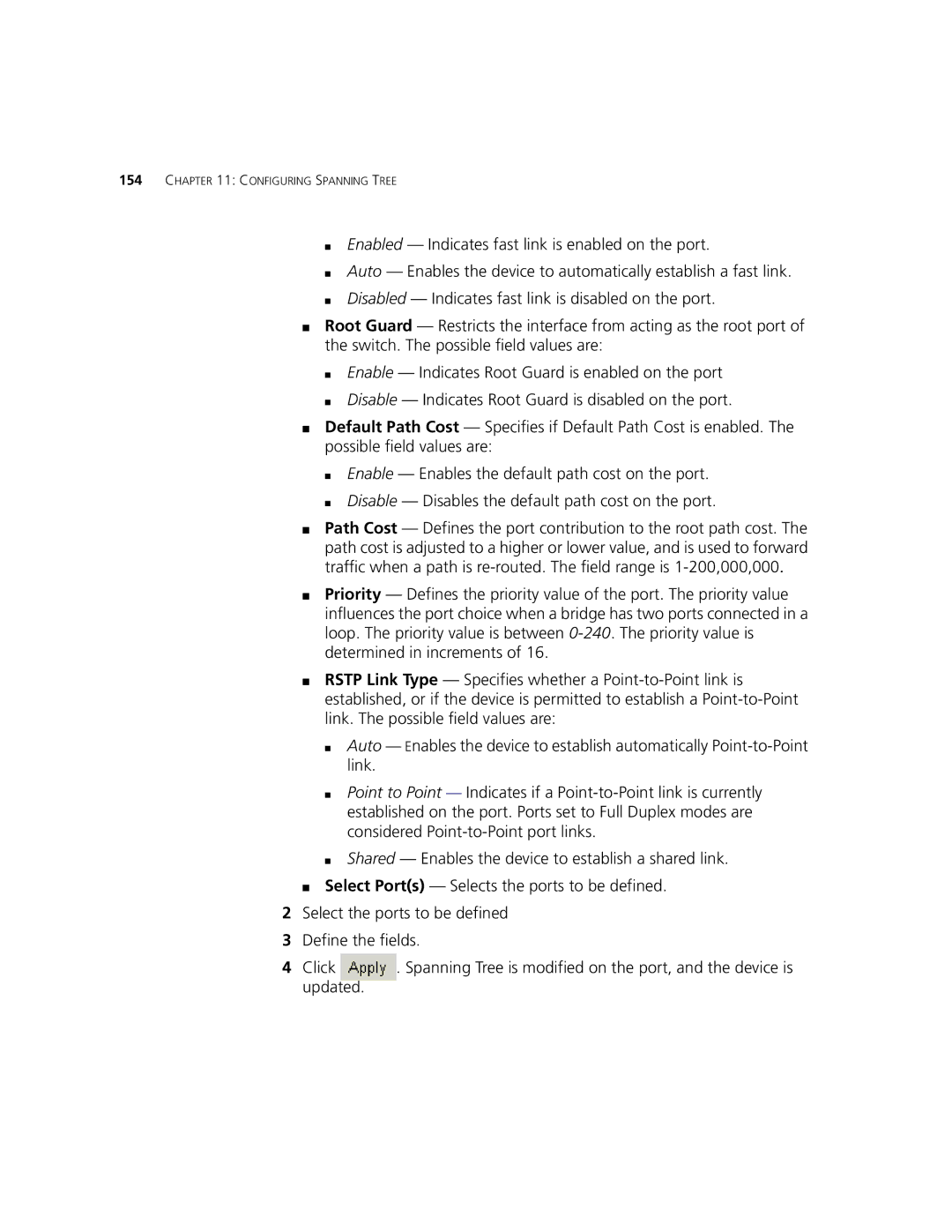154CHAPTER 11: CONFIGURING SPANNING TREE
■Enabled — Indicates fast link is enabled on the port.
■Auto — Enables the device to automatically establish a fast link.
■Disabled — Indicates fast link is disabled on the port.
■Root Guard — Restricts the interface from acting as the root port of the switch. The possible field values are:
■Enable — Indicates Root Guard is enabled on the port
■Disable — Indicates Root Guard is disabled on the port.
■Default Path Cost — Specifies if Default Path Cost is enabled. The possible field values are:
■Enable — Enables the default path cost on the port.
■Disable — Disables the default path cost on the port.
■Path Cost — Defines the port contribution to the root path cost. The path cost is adjusted to a higher or lower value, and is used to forward traffic when a path is
■Priority — Defines the priority value of the port. The priority value influences the port choice when a bridge has two ports connected in a loop. The priority value is between
■RSTP Link Type — Specifies whether a
■Auto — Enables the device to establish automatically
■Point to Point — Indicates if a
■Shared — Enables the device to establish a shared link.
■Select Port(s) — Selects the ports to be defined.
2Select the ports to be defined
3Define the fields.
4Click ![]() . Spanning Tree is modified on the port, and the device is updated.
. Spanning Tree is modified on the port, and the device is updated.
